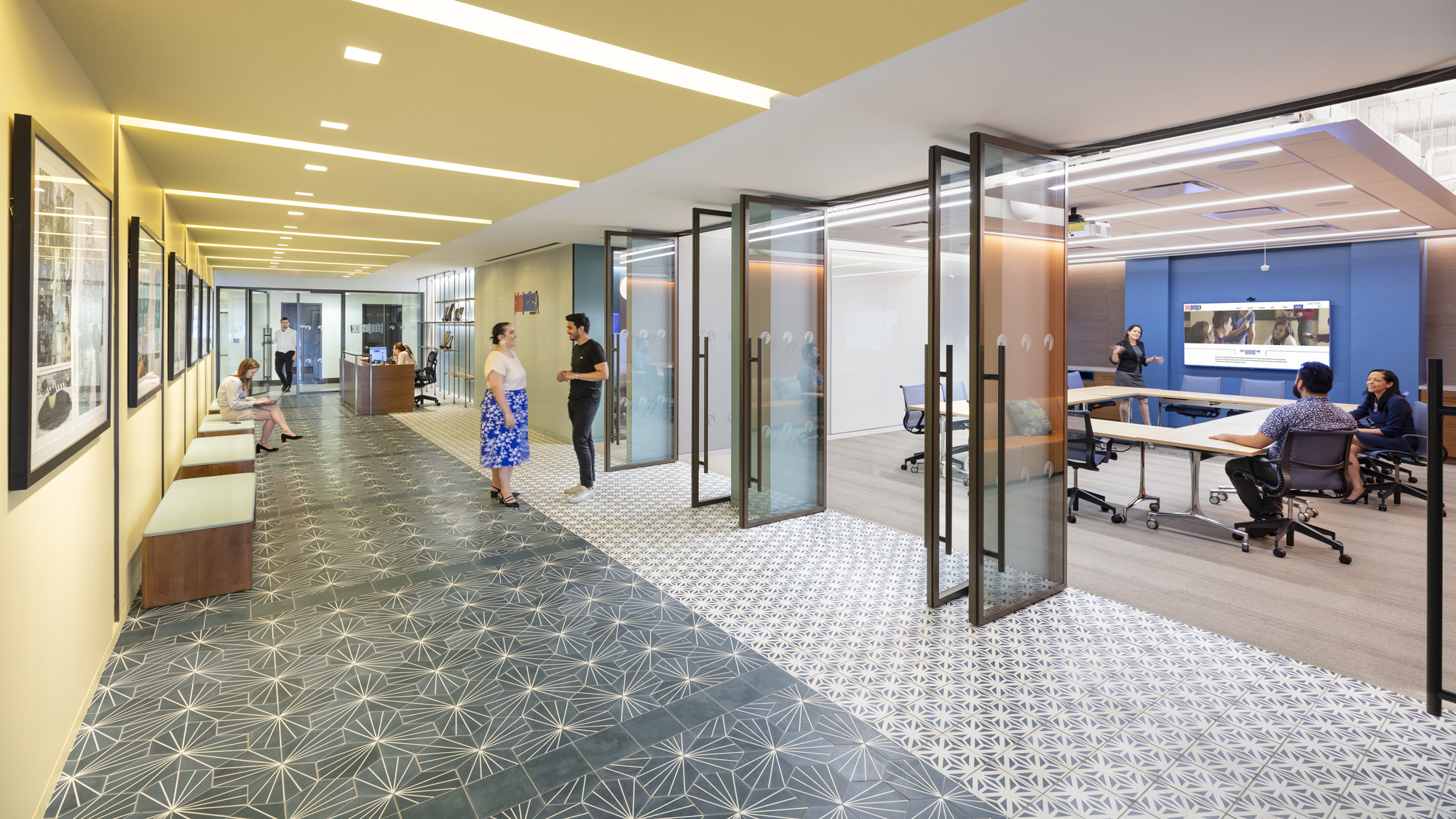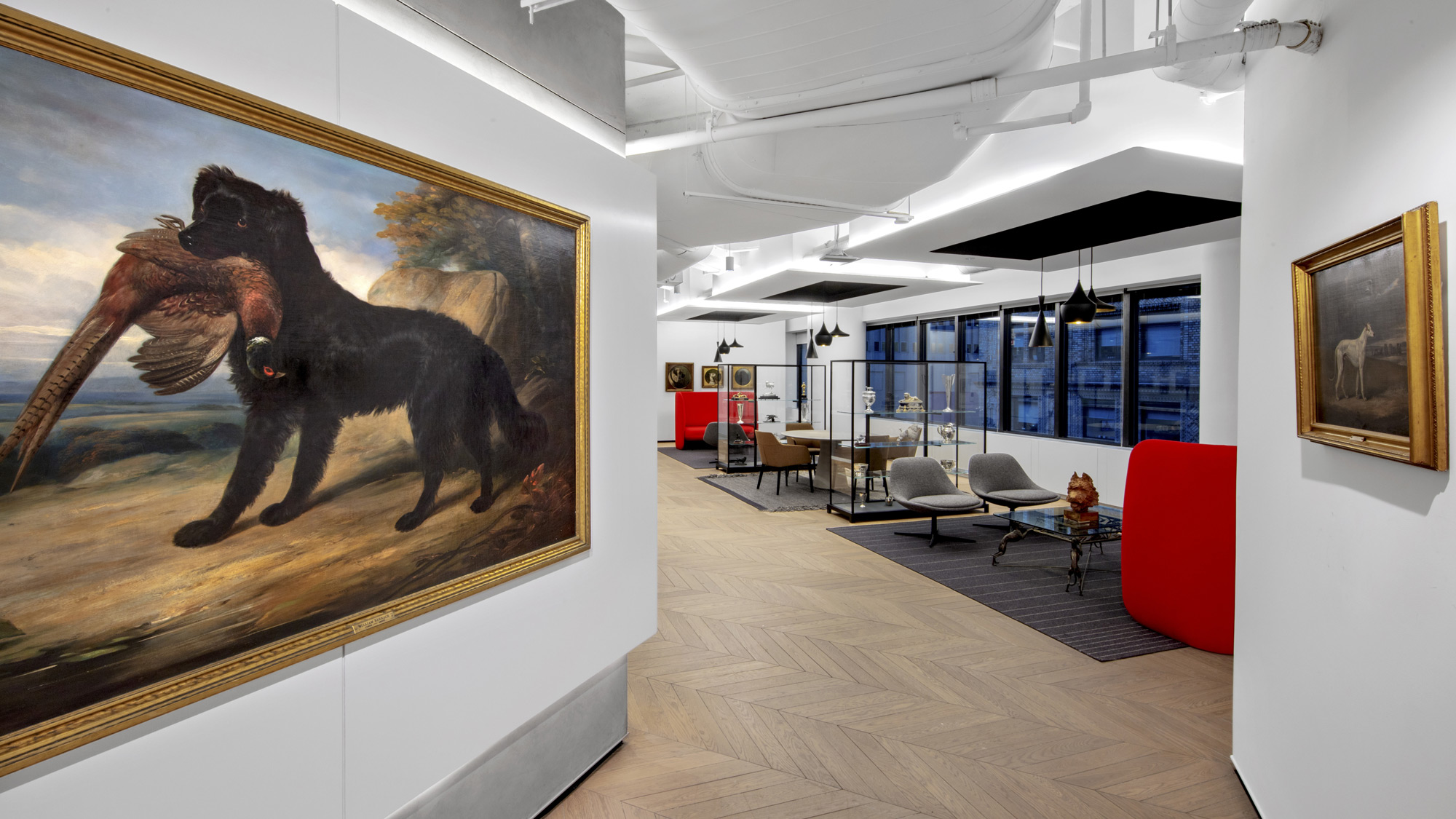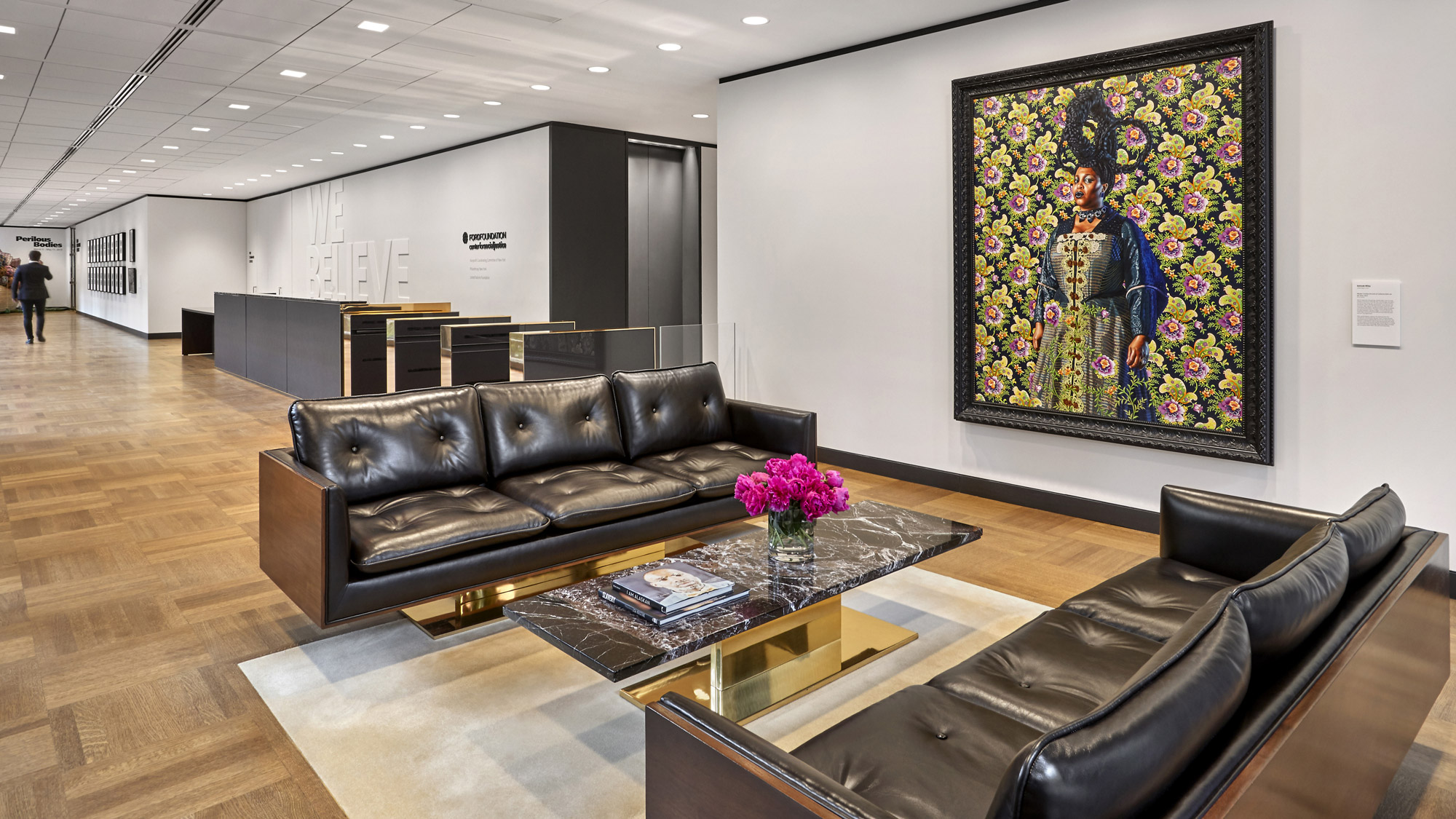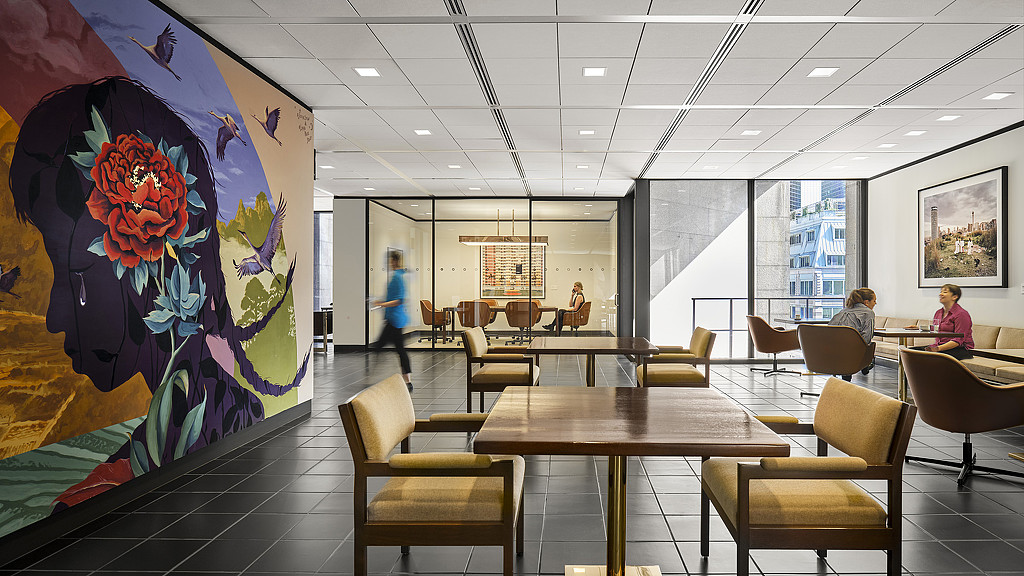Blank Canvas: Using Art to Create Community in the Workplace
By Santiago Rivera
Throughout history, art has played a pivotal role in activating social awareness and movements. Artists serve as narrators of social change, pushing for dialogue and providing hope. It comes as no surprise that not-for-profit foundations and organizations often promote and express their mission through their involvement in the arts. By partnering with or commissioning work from artists, they provide a conduit to spread awareness and an opportunity for organizations to engage with their community on a deeper level. Gensler is harnessing the power of art in storytelling to help our mission-driven clients create a forum through space to visually and powerfully express their mission.
Integrating public-facing gallery spaces into the workplace provides an opportunity to showcase art and initiate a dialogue about social justice, which ultimately increases awareness of an organization’s mission. Whether it is a curated art program, an emerging artists installation, or a dedicated gallery, organizations are finding unique ways to use art as a tool to inspire social change and connect with the community.

Gensler was engaged by LatinoJustice to create their new headquarters in New York City. With a mission to, “use and challenge the rule of law to secure transformative, equitable and accessible justice, by empowering their community and by fostering leadership through advocacy and education,” they are on the front lines of championing civil and human rights. With today’s social changes and rollback of long-standing civil rights protections happening like never before, LatinoJustice sees an urgency to expand its advocacy and litigation efforts to affect policy and our society. By introducing an art gallery into their workplace, organizations like LatinoJustice can go deeper into their mission and engage with their community in an impactful way.
The idea of a gallery space was not originally part of the design program for LatinoJustice. Rather, it was an organic manifestation of conversations about the desire to extend their reach to communities outside their organization. We transformed an ordinary reception into a gallery wall of art that aligns with their values, allowing guests to immediately engage with the organization’s mission.
We pulled inspiration from Hispanic artists and motifs, like Luis Barragan’s vivid use of color in Mexico and boldly colored and patterned Puerto Rican floor tiles, to bring their community connections to life. Although a small intervention to their program, it has created broader implications, becoming the bridge to their community. The incorporation of art into their space creates a more giving, engaging, and community-oriented environment than a traditional workplace.

The American Kennel Club (AKC) came to Gensler to design a new headquarters in New York City that would honor their heritage and mission while also providing a fresh and modern space for employees and guests. With the AKC Museum of the Dog located in the same building, we saw it as an opportunity to design the workplace as an extension of the museum by incorporating their extensive art and rare books collection. The headquarters offers an immersive brand experience that evokes a feeling of belonging and inspiration for the organization’s mission. The reception area doubles as a gallery space to showcase AKC’s artwork and sculptures, while a wall display highlights their unique walking cane collection and a glass-enclosed library holds a floating bookcase with their rare books.

On a much larger scale, art acted as a key driver in the renovation of the Ford Foundation Center for Social Justice. With a history of supporting the arts and artists, Ford’s renewal gave them the opportunity to create the Ford Foundation Gallery, a public-facing space dedicated to showcasing their social justice art collection. By reducing the amount of private offices in the building, creating a more equitable workplace, and restacking the building, Gensler was able to integrate a gallery adjacent to the building’s atrium, offering a new way to interact with their international community. As Ford Foundation’s new Gallery Director Lisa Kim explained to Art Net News, “The refurbishment at the Ford Foundation presented an opportunity for the foundation to engage directly with the public…By having a physical space we can present exhibitions, and we can have a dialogue with the communities we work with.”
The display of art was not restricted to the gallery. By reconfiguring typical workplace areas, we strategized a cohesive plan to display art that can be experienced while walking through the building, as well as from the atrium garden on the ground floor. In creating an open and transparent workplace, visitors in the garden are allowed sweeping views of the artwork integrated on every floor of the foundation. This spatial connection between the fight for social justice and art is echoed by Ford President, Darren Walker, who believes “that artists have a special place on the frontlines of social change – challenging social preconceptions, telling unheard stories, expanding understanding, and imagining new possibilities.”
Whether it is through formal gallery spaces, multipurpose rooms, or large-scale art installations, today more than ever we are reminded of the value of artists as truthtellers. By incorporating art into the language of not-for-profit spaces, we are challenged to face the complex issues they fight for and engage in a deeper dialogue for an equitable future.

